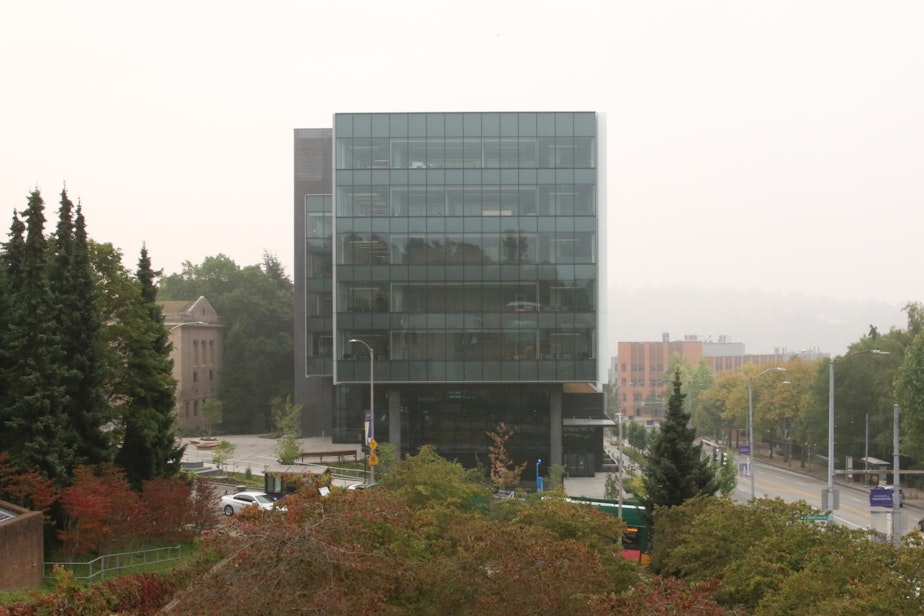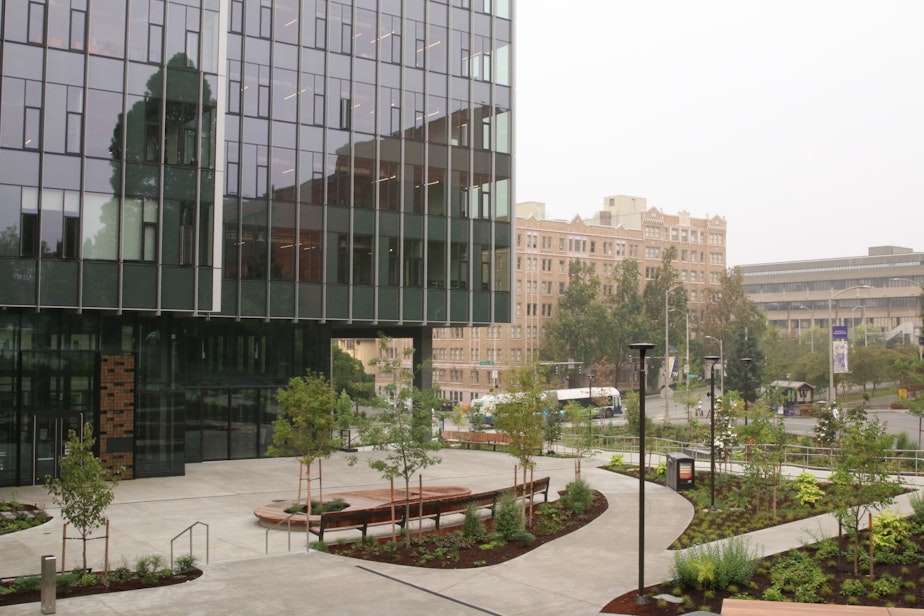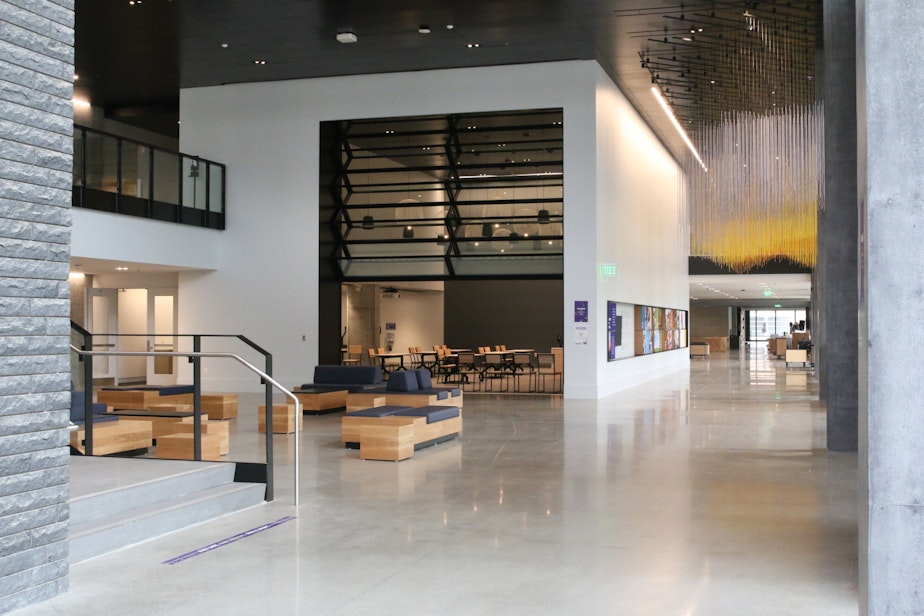UW's Center for Population Health aims to prevent the next pandemic

The coronavirus pandemic has revealed some weak points in our public health response system. Part of the problem is that the experts involved don’t always talk to each other.
The University of Washington is hoping to improve the public health response to future pandemics by bringing many different kinds of academics together under one roof. But some say racial diversity — and not just diversity of expertise — among the center's specialists will be key to its success.
While many of us were isolating at home, the University of Washington finished construction on a huge new building: The Hans Rosling Center for Population Health. It’s 8 stories tall, and each of those stories is as long as a football field — and it has a big purpose.
“I sort of see the mission of this building as preventing the next pandemic,” said Hilary Godwin, dean of the university's School of Public Health.
The building cost around a quarter billion dollars to build, much of that coming from the Gates Foundation.
The people inside the building will crank out research and develop leaders who turn that research into public health policy.
During the pandemic, some of those leaders have become local celebrities.
Sponsored
One of those people is Dr. Jeff Duchin, an adjunct professor there. He’s also the lead health officer for Public Health–Seattle & King County, and is spearheading the local response to the virus. You might consider him the Anthony Fauci of King County.
“I don’t mean to sound arrogant, but in public health, we always thought what we were doing is important," Godwin said. "But we’re pretty used to working in the shadows.”
The pandemic has revealed how important it is for different academics to work together and collaborate, because each specialist has different areas of expertise.

Uli Haller, another official with the School of Public Health, said that this kind of collaboration is hard to do when academics are scattered across 20 different buildings, as they were before.
Sponsored
Haller said that even before meetings shifted to Zoom during the pandemic, “one of the problems we have, just internally, is that people don’t even know what each other are doing all of the time, because they’re so busy doing it. We find even our own faculty — one of the things they’re most interested in is finding out what their colleague is researching."
In academic journals, science is made more robust through peer review. In this new building, there’s another kind of accountability that could happen when scientists run into each other in the Starbucks line in the lobby.
“Scientists love to argue with each other," said Dean Hilary Godwin, "And having more types of people talking to each other definitely improves your potential to get things right.”
Take, for example, the Institute for Health Metrics and Evaluation (IHME), which tracks the coronavirus pandemic and develops models predicting its future spread. The institute is part of the university, but until now, they’ve been located way off campus near Amazon’s headquarters, where they developed their own culture.
“They resemble, a little bit more a traditional biotech or tech company,” said Haller.
Sponsored
But some of thee IMHE's predictions have been criticized for being inaccurate. Critics also say their prediction algorithms haven’t been transparent, whereas science is all about transparency.
Now, they institute is being brought into the new building – where it will be regularly run into more traditional scientists. “This building was designed to bring people together,” Haller said.

But some faculty caution against overselling the Center for Population Health's role in making change.
“I always get a little bit concerned when I read about all the great things the center is going to address,” said Clarence Spigner, who is a professor in the School of Public Health. He teaches about the impact of public health on marginalized populations.
Sponsored
Spigner worries that for all the talk about bringing people together in this new building, the perspective there will still be too narrow, for one big reason: “Not enough diversity,” he said.
Spigner said that with some notable exceptions, the faculty is mostly white and that this will hinder the center’s efforts to prevent the next pandemic.
“Having people in the room who represent the populations that are being most impacted by the problem and are going to say, 'That’s not going to work in that community',” he said, is imperative.
Spigner added that he hopes the faculty will speak up for populations not represented in the room, but that it wouldn't be the same as hiring more Black and Indigenous people as professors, who can challenge and strengthen research by bringing their own experiences to the table.
For example, when considering how to encourage people to wear masks, Spigner, who is Black, said many academics might be unaware of how wearing a mask might put a Black person in danger, because it can arouse the suspicion of white people.
Sponsored
Spigner, however, pointed to one study showing that African Americans are generally wearing masks during the pandemic, despite this burden.
He added that having people of color in the room means additional points are less likely to be missed, and public health campaigns will run into fewer roadblocks and be more successful.
The center’s true value, he said, will be clearer in about 10 years, when we can look back and ask: Did it make a difference? For Spigner, that means achieving measurable results.
For example, did the Center for Population Health reduce the impact of the next pandemic on communities of color? Did it reduce the unequal impacts of other health crises, like homelessness, or infant mortality rates among African Americans, or addiction?
Spigner is skeptical. But like any good scientists, he’s open to being wrong.




